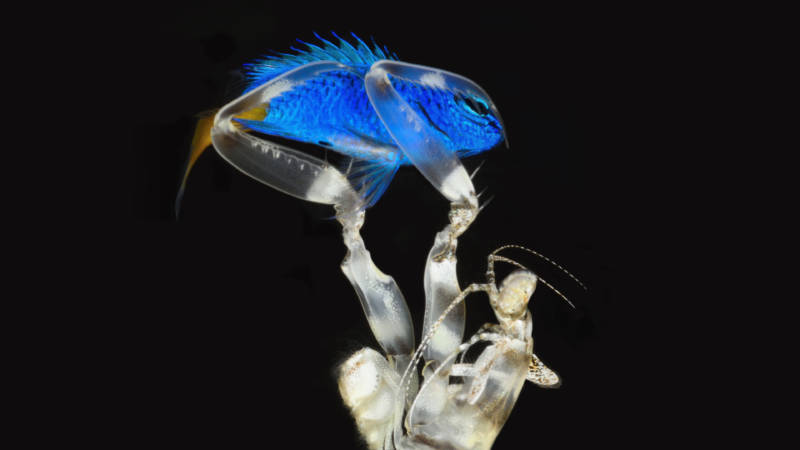The Snail-Smashing, Fish-Spearing, Eye-Popping Mantis Shrimp
Mantis shrimp, a group of aggressive, reef-dwelling crustaceans, take more than one first-place ribbon in the animal kingdom. Outwardly, they resemble their lobster cousins, but their colorful shells contain an impressive set of superpowers.
Now, scientists are finding that one of those abilities — incredible eyesight — has potential life-saving implications for people with cancer.
“They have these ridiculous eyes that sense so many things at once,” said Sam Powell, a doctoral student in computer science and engineering at Washington University in St. Louis. “It’s been very interesting figuring out what we can do with that that helps out humans.”
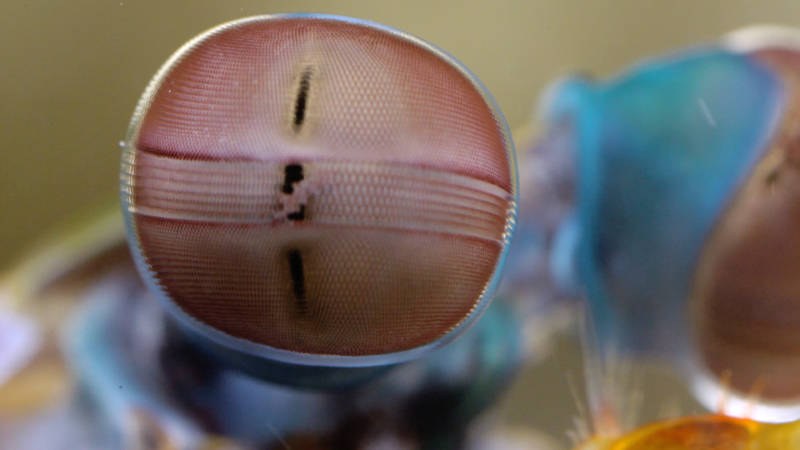
Powell is part of a collaboration of engineers and wildlife biologists, co-led by Viktor Gruev at the University of Illinois at Urbana-Champaign, working on a set of mantis shrimp-inspired imaging technologies that could, among other applications, improve how doctors detect and treat certain cancers.
Mantis shrimp come in two varieties. There are the “smashers” and the “spearers,” named for their attack modes when hunting prey. With their spring-loaded, weaponized legs, these predators can crack a snail shell or harpoon a passing fish in a single punch.
The speed of these attacks has earned the mantis shrimp a world record: fastest strike in the animal kingdom. At 30 times faster than the blink of an eye, the attack is so swift that it can vaporize nearby water molecules, producing bubbles where no bubbles should be.
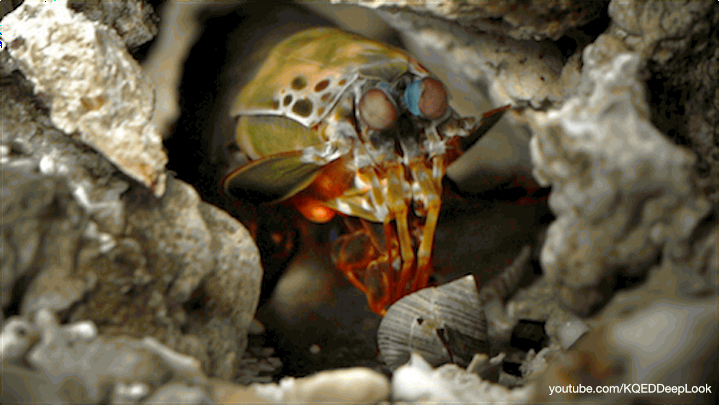
The mantis shrimp’s powerful punch seems to go hand in hand with its world-class eyesight. Like most crustaceans and insects, the mantis shrimp’s eyes are made up of thousands of light-trapping facets — picture a fly’s eye — known as ommatidia. In many species, ommatidial eyes are marked by black spots, called pseudopupils, that permit depth perception, much the way human pupils do.
What’s unique to the mantis shrimp is the way the ommatidia of each eye are divided into three sections, each moving independently. That means mantis shrimp vision is able to triangulate distance using up to six images in the brain.
“That’s important for an animal that makes its living smashing and spearing things,” said Roy Caldwell, a mantis shrimp expert at UC Berkeley.
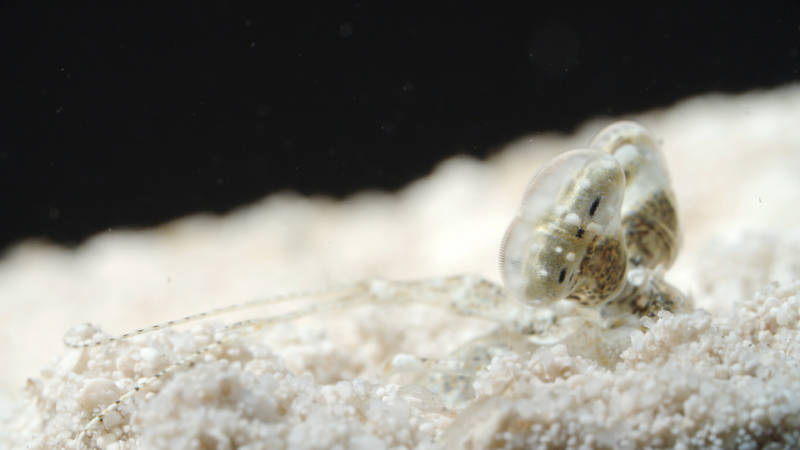
But the power of the mantis shrimp eye doesn’t end there. Mantis shrimp can perceive the most elusive attribute of light from the human standpoint: polarization.
Polarization refers to the angle that light travels through space. When light from the sun enters the earth’s atmosphere, it comes in waves moving in all directions. Sometimes, it bounces off a surface that restricts, or polarizes, the shape of its movement.
Polarized light sometimes appears as glare, such as when light reflects off the ocean or a wet highway. Polarized eyeglasses can filter out these blinding reflections by blocking light from entering the eye at certain angles.
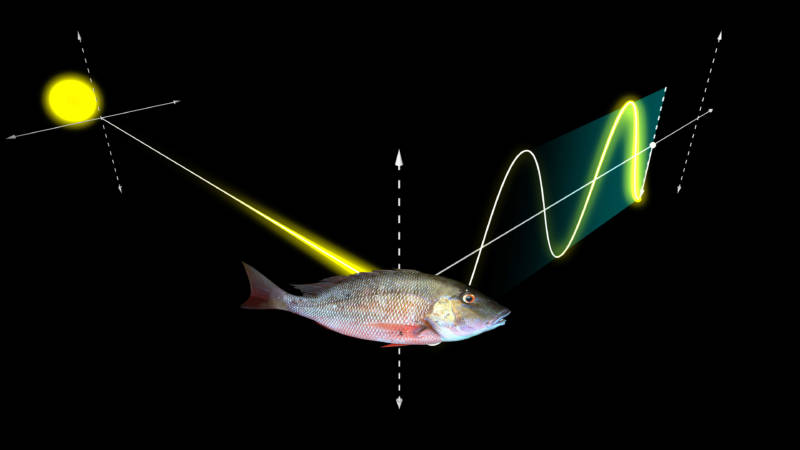
The mantis shrimp eye, however, contains extra sensors that can analyze the angle that the light wave is traveling. In other words, it knows when light is polarized.
Other underwater predators, including cuttlefish and octopuses, have the same ability, and they use the polarizing surfaces of fish, crabs, and other potential prey to make them pop against the less polarized backdrop of water.
“It’s very common in animals,” said Thomas Cronin, a professor of Biological Sciences at the University of Maryland, Baltimore County. “In fact, we’re are among the few that don’t use polarized light very much, if at all. “
What’s unique to some mantis shrimp is their ability to perceive another, much more rare, variety of polarized light. This “circular” polarized light moves not in a flat plane, but in a twisted one, like a helix.
Circular polarized light is used in some 3-D glasses and DVD technology. Mantis shrimp not only see this kind of polarization, they broadcast it. Parts of the males’ bodies function as circular-polarizing surfaces, flashing a secret code only visible within the species.
“It gives them an incredibly private channel of communication that no other animal can see,” said Caldwell.
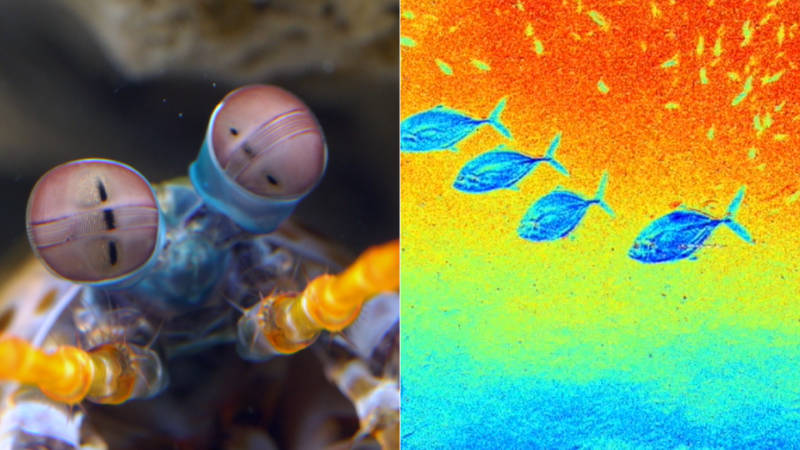
Males display these body parts during courtship to attract females. Other research has shown that adult males flash their polarized parts to alert other males to their presence inside a burrow, a warning that the homeowner is armed and dangerous.
Inspired by the mantis shrimp’s superlative eyesight, the group of researchers is collaborating to build polarization cameras that would constitute a giant leap for early cancer detection.
“Looking at nature can help us design better and more sensitive imaging techniques,” Gruev said.
The cameras, which are small enough for endoscopic use, can see polarization patterns on the surfaces of human and animal tissue. At the cellular level, fast-growing cancer cells are disorganized compared to healthy cells like skin and muscle. Because of the structural differences, healthy and diseased tissues react differently to polarized light.
These signs show up early with cancer, before cues that typically alert doctors. Current colonoscopy techniques, for example, employ black and white images to look for abnormal shapes, such as polyps. But sometimes, cancerous tissue in the colon is flat, blending in with healthy tissue.
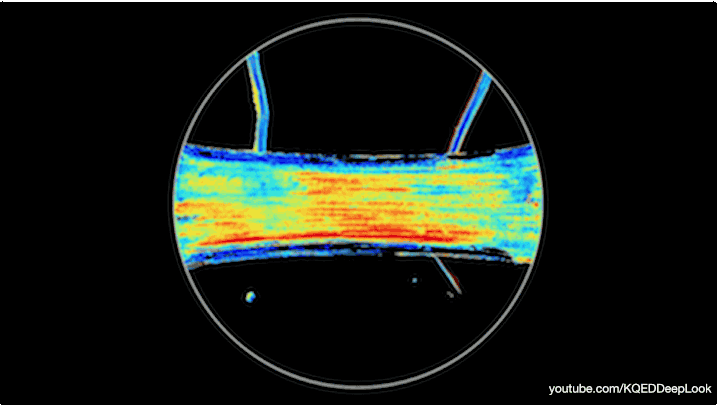
In one study, Gruev and his team tested polarization cameras for colon cancer diagnosis in mice. The camera successfully converted polarization data into color images in real-time, revealing where the healthy tissues ended and the diseased ones began.
Different types of cancer cells have different polarization signatures, while healthy tissues have a consistent profile. “The polarization structure makes the cancer apparent,” Gruev said.
Clinical trials with human breast cancer patients are currently underway. One day, according to Gruev, polarization imaging will be part of every cancer surgeon’s toolkit, where it will help spot the extent of cancer spread, known as its positive margin, during live surgery. Currently, doctors have no way to confirm whether a tumor has been fully removed until after surgery, when they can send extracted tissues to the lab.
